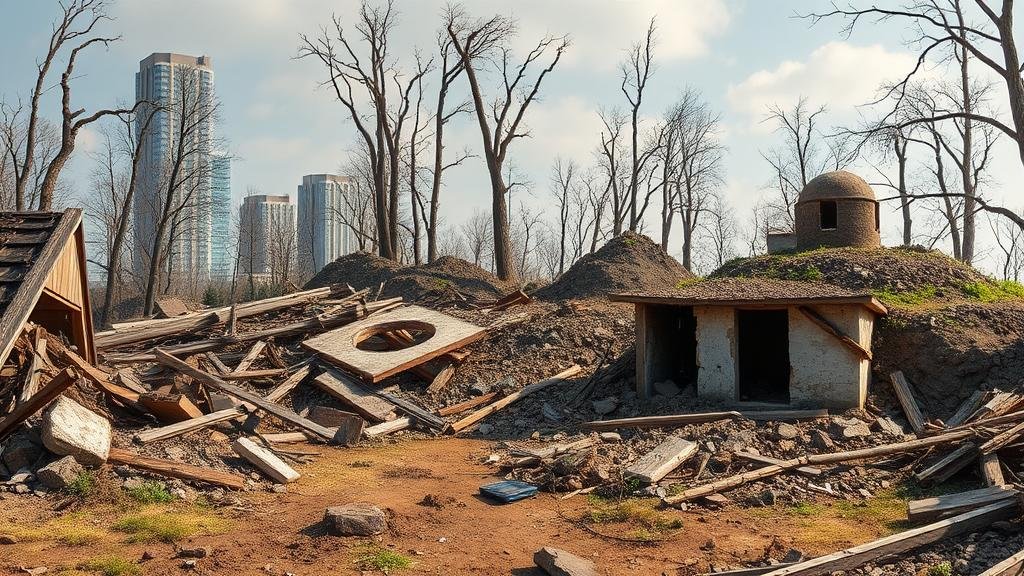Studying Historic Disaster Zones to Locate Buried Relics and Treasures
Studying Historic Disaster Zones to Locate Buried Relics and Treasures
The investigation of historic disaster zones has fascinated archaeologists, historians, and treasure hunters alike for centuries. These areas, shaped by catastrophic events such as natural disasters, wars, and significant societal collapse, often hide valuable relics and treasures beneath the surface. This article explores methodologies, case studies, and the implications of uncovering artifacts in these locations, as well as the intersection of technological advancements with traditional archaeological techniques.
Understanding Historic Disaster Zones
Historic disaster zones are defined as areas that have undergone severe disruption due to events like earthquakes, floods, and military conflict. e events not only reshape the physical landscape but also lead to the burial of objects that may hold significant cultural value. For example, the 79 AD eruption of Mount Vesuvius buried the city of Pompeii, preserving everyday items and architecture that provide insight into Roman life.
Methodologies for Locating Buried Artifacts
Archaeologists and treasure hunters utilize a variety of methodologies to locate and excavate buried relics and treasures in historic disaster zones. Traditional excavation methods are often complemented by modern technologies, which improve the accuracy and efficiency of discoveries.
- Ground Penetrating Radar (GPR): This non-invasive technique uses radar pulses to image the subsurface, allowing researchers to locate structural anomalies that may indicate the presence of buried artifacts.
- Magnetometry: This method detects variations in the Earths magnetic field caused by metallic objects, thus guiding archaeologists to potential treasure locations.
- GIS Mapping: Geographic Information Systems (GIS) can analyze spatial data and environmental factors that contribute to disaster zones, highlighting areas of potential archaeological interest.
Case Studies of Successful Discoveries
Several significant discoveries underline the value of studying historic disaster zones:
- The Sunken City of Dwarka (India): Archaeologists believe this city, linked to the epic Mahabharata, was submerged due to rising sea levels and tectonic activity. Artifacts discovered include ancient pottery, tools, and structures that date back millennia.
- The Battle of Gettysburg (USA): Following Americas Civil War, archaeologists have recovered numerous relics, including weapons and personal effects of soldiers. These discoveries provide valuable insight into military strategy and daily life during the 1863 conflict.
- Pompeii (Italy): As previously mentioned, the eruption of Mount Vesuvius led to the preservation of the city under ash. Excavation efforts have revealed vivid frescoes, artifacts, and even human remains, granting unparalleled access to Roman civilization.
The Role of Technology in Archaeological Discoveries
Advancements in technology have revolutionized the field of archaeology, particularly in historic disaster zones. Techniques such as drone imagery, 3D modeling, and machine learning algorithms for data analysis are becoming standard practice.
For example, researchers used drone technology during the excavation of the Maya city of Tikal in Guatemala to map out hidden structures covered by dense forest. This approach allowed them to cover vast areas quickly and efficiently, leading to new insights into ancient Maya civilization.
Ethical Considerations in Treasure Hunting
While the allure of uncovering hidden treasures is an exciting prospect, it is vital to address ethical considerations surrounding treasure hunting in historic disaster zones. The potential for looting and destruction of archaeological contexts raises concerns about preserving cultural heritage.
Organizations such as UNESCO advocate for responsible practices in archaeology, emphasizing the importance of permitting and conducting comprehensive studies before any excavation. Ethical frameworks must guide treasure hunters to ensure that discoveries contribute to cultural knowledge rather than diminish it.
Conclusion and Future Directions
The study of historic disaster zones remains a vital aspect of archaeology, offering insights into past societies and their responses to catastrophic events. As technology continues to evolve, the potential for discoveries expands, providing opportunities to uncover lost histories.
Also, collaborative efforts between archaeologists, historians, and indigenous communities can enhance ethical practices in the field. Future research should focus on integrating innovative technologies with traditional methods, ensuring that the pursuit of buried relics and treasures is conducted with respect for cultural heritage.
In summary, the confluence of science, history, and ethics in studying historic disaster zones not only increases our understanding of past civilizations but also helps preserve their stories for future generations.



